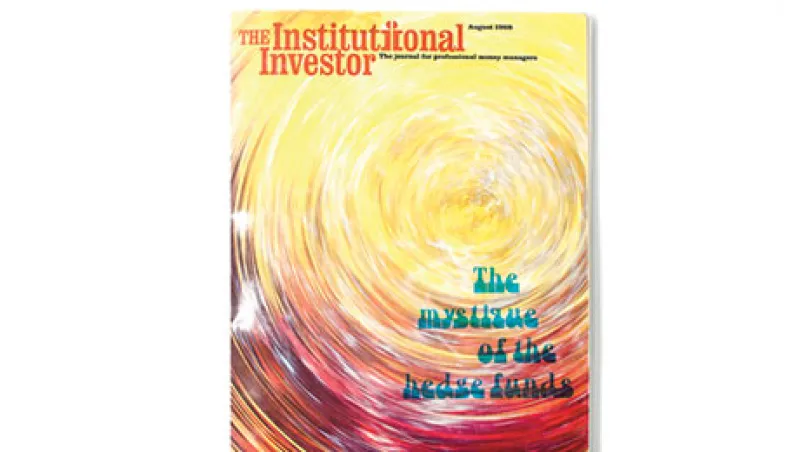Unless you’re the type who avoids Facebook’s feed and CNBC’s red banner, you will know that every sniffle and stock tip emerging from legendary investor Warren Buffett is covered like a Russian state visit.
It wasn’t always this way. In the late 1960s basically two publications even knew that there existed a man in Omaha, Nebraska, with a gift for picking securities: Fortune, via the unsinkable Carol Loomis (inventor of the term “hedge funds” and eventually Buffett’s in-house scribe), and Institutional Investor.
George Goodman — the first editor of this magazine, who passed away in 2014 — once proudly told me that he had introduced Buffett to the world. This wasn’t exactly true. While Goodman’s 1972 book Supermoney, written under the pseudonym Adam Smith, was the first to bring Buffett to the attention of a popular audience, both Loomis and Peter Landau, then senior editor and later the greatest Institutional Investor chief editor, had put his name in ink four years earlier.
For Institutional Investor, the first mention of Buffett’s name came 18 issues in, for Landau’s first piece in the magazine. “The Mystique of the Hedge Funds,” published in August 1968, revealed a secretive society that worked markets outside of the mutual fund universe. The cover art was decidedly Summer of Love, and the contents concrete: These funds, “sprouting like weeds in a damp summer,” had an “air of intrigue and mystery,” Landau wrote. They numbered more than 100, and their combined assets “may be approaching $2 billion.”
Landau’s first mention of Buffett — the man who would ultimately consume financial media — portrayed him as an outlier. Typical hedge funds charged a 2 percent management fee and 20 percent of profits, Landau explained. They also had high turnover in their portfolios, and they often sold stocks short, used leverage, and invested as private pools.
Yet “other partnerships do some things that the typical hedge fund does, but avoid others,” Landau wrote. “Warren Buffett, who heads Buffett Partners of Omaha, Nebraska, for instance, has a similar partnership agreement and fee structure, but invests in what he calls ‘business ideas not brokers’ ideas.’ Buffett has bought control of such potential turnabout situations as a department store in Baltimore, a chain of women’s apparel shops, and a cotton manufacturing firm.”
That was it.
Buffett, of course, would soon close his partnership, turn his then-millions into multibillions as Berkshire Hathaway, and become a household name. But parts of Landau’s piece might still apply to Buffett today — if not the hedge fund milieu he left behind: “Normally, dinner conversation is half business and half sex and politics,” Landau wrote. “With these hedge fund guys there is very little sex and politics. They are also the type who would be successful at anything — teaching school or even running a fish market.”
Now there’s an image: Buffett the fishmonger.






